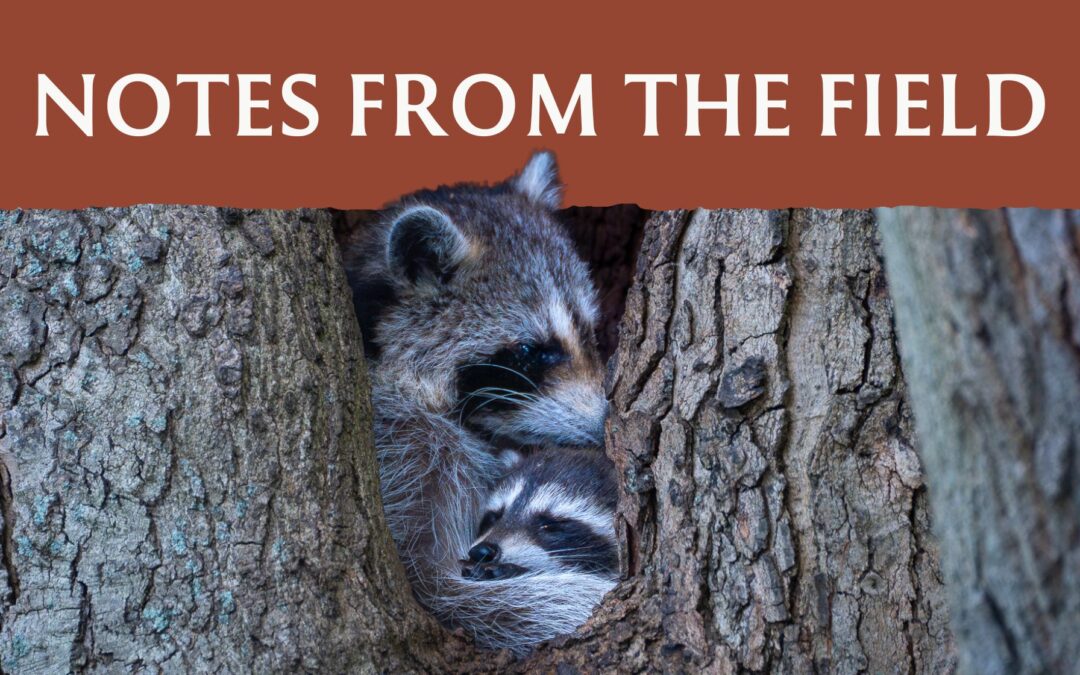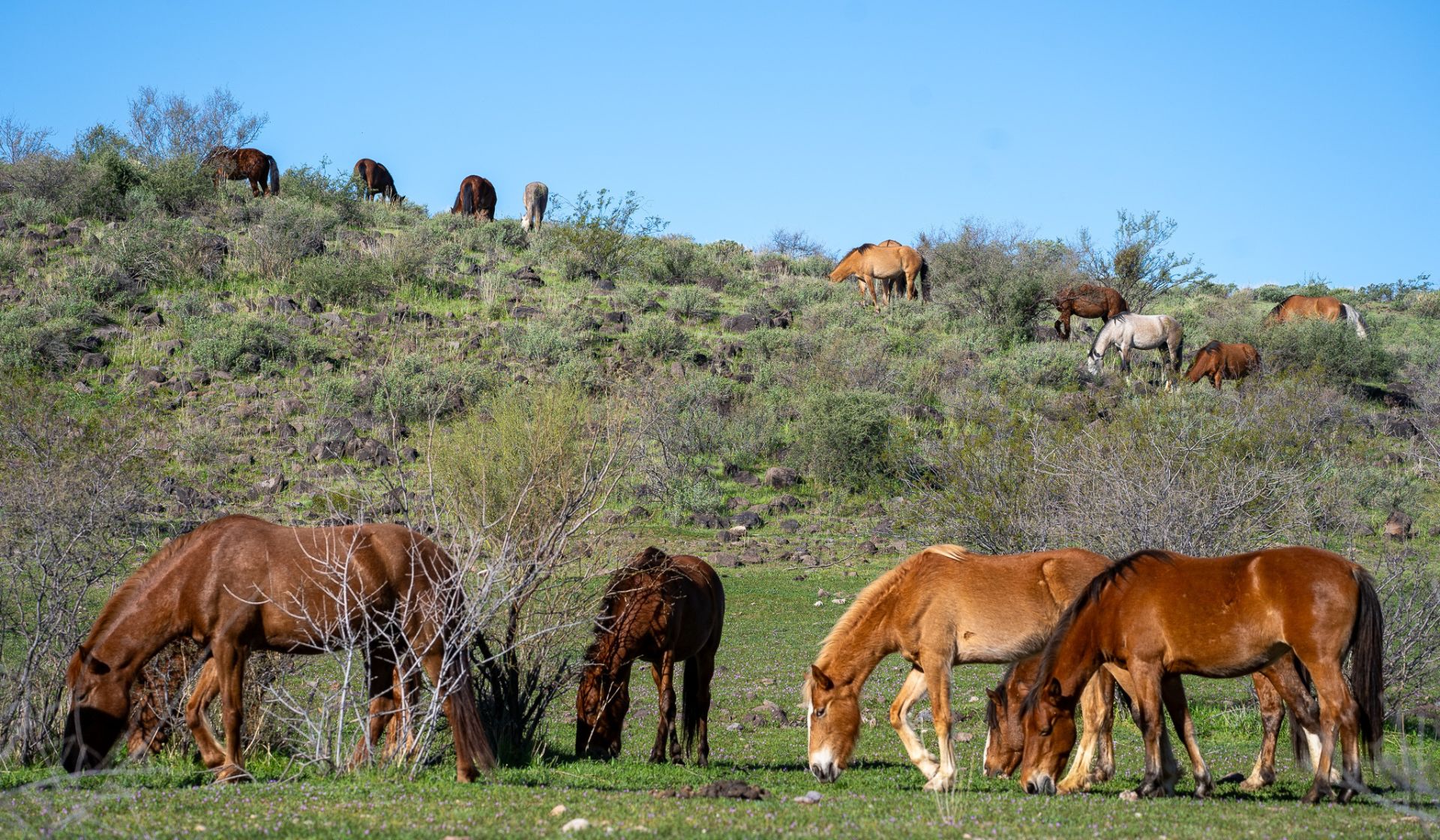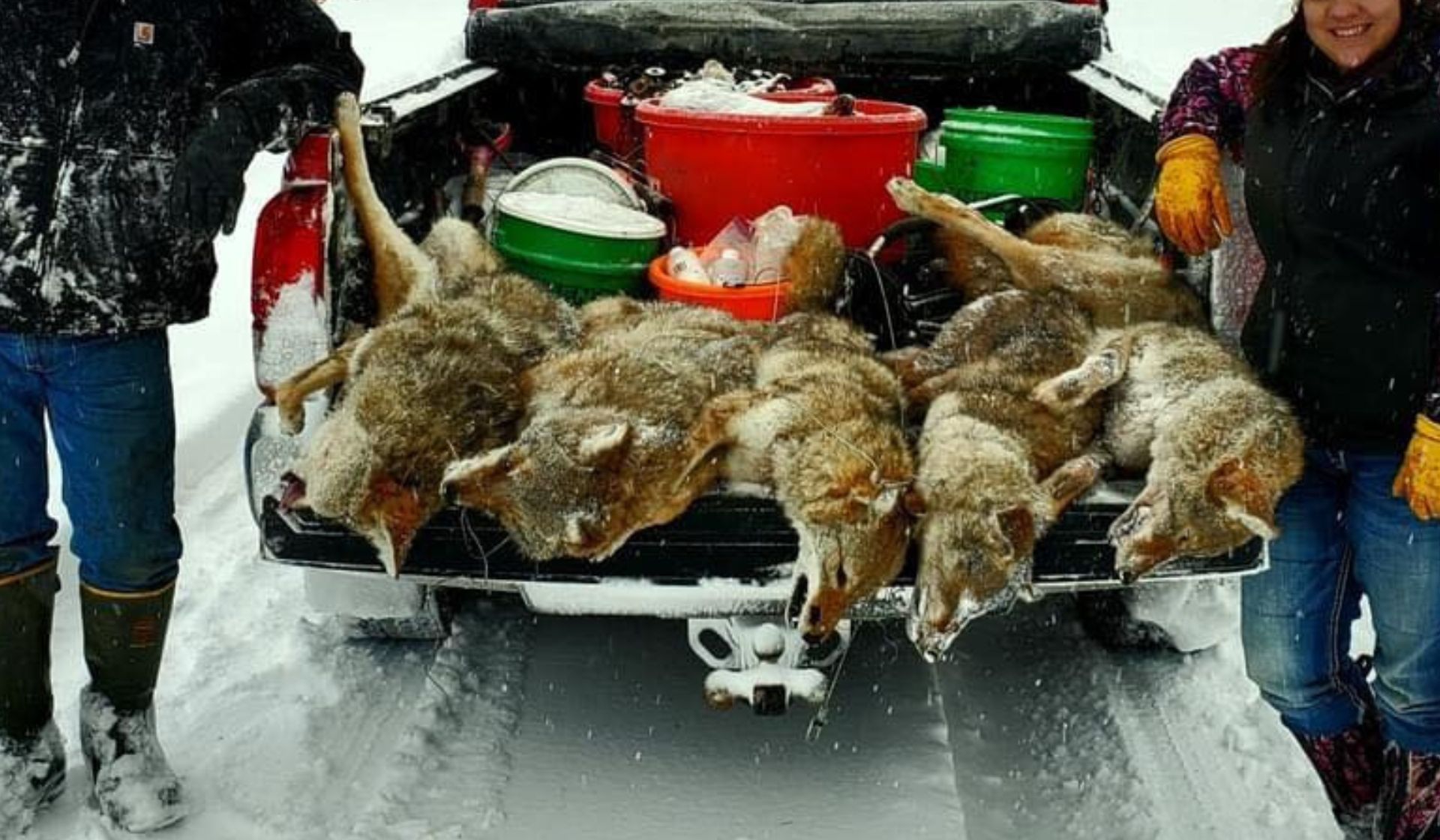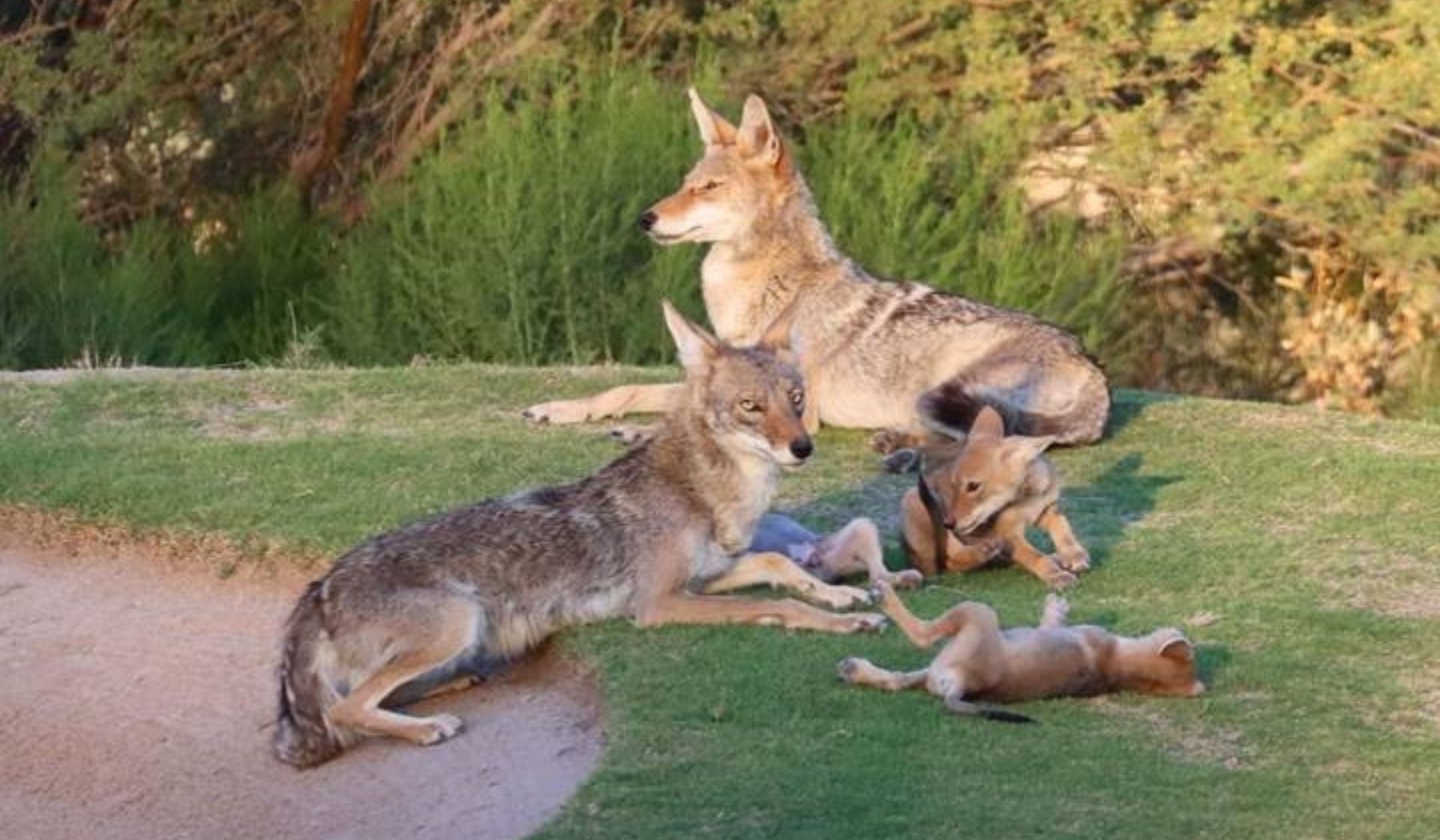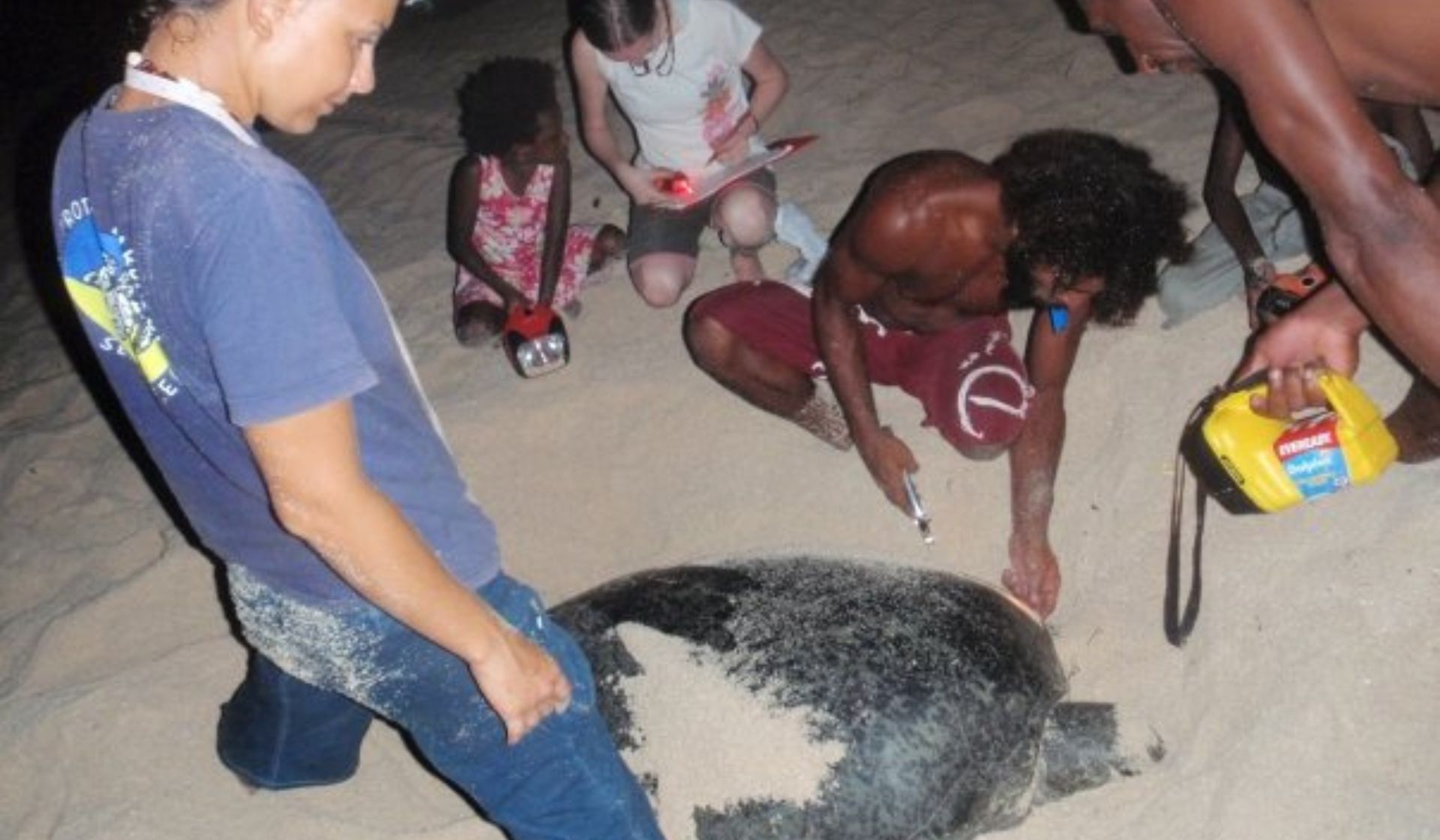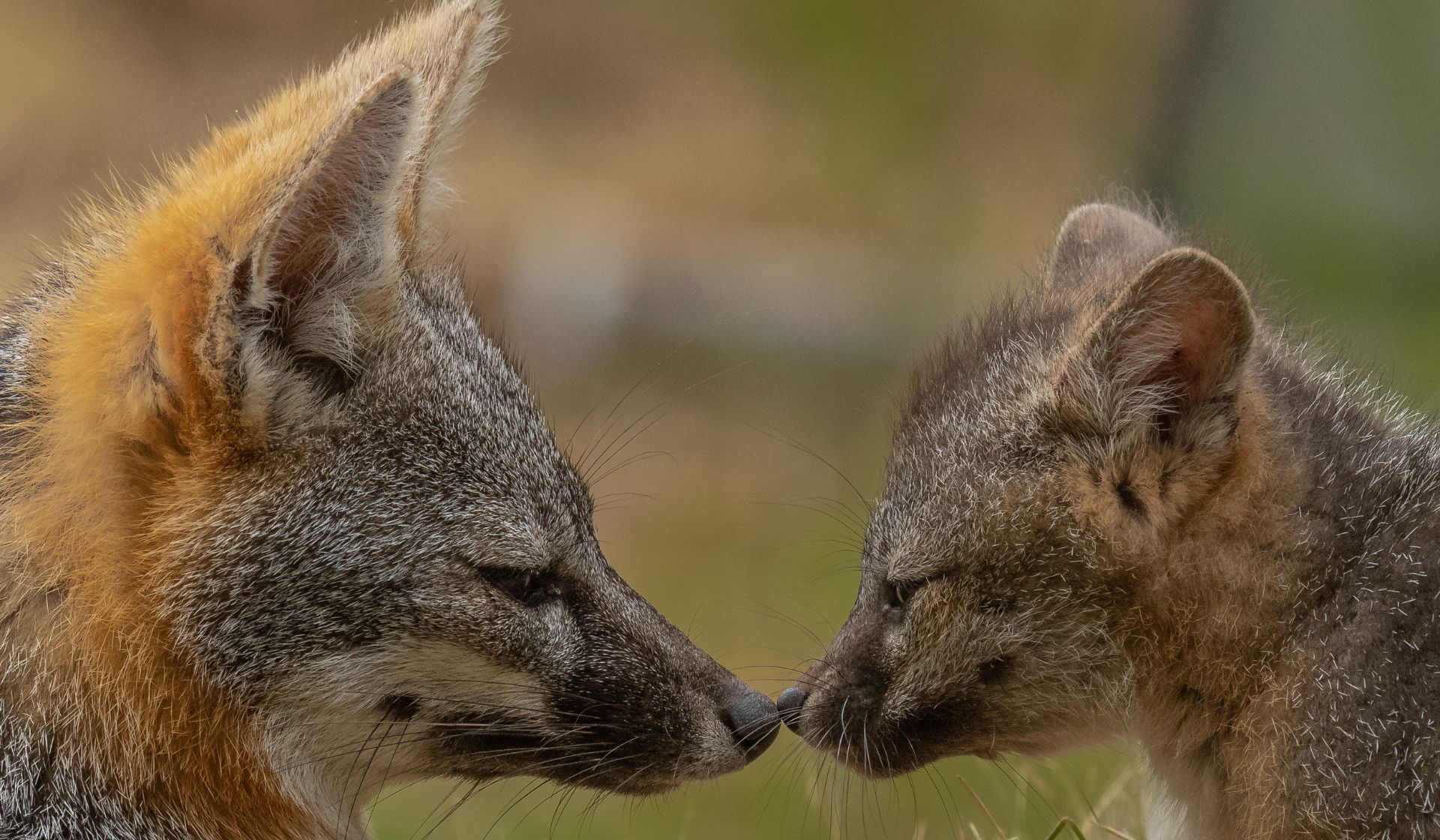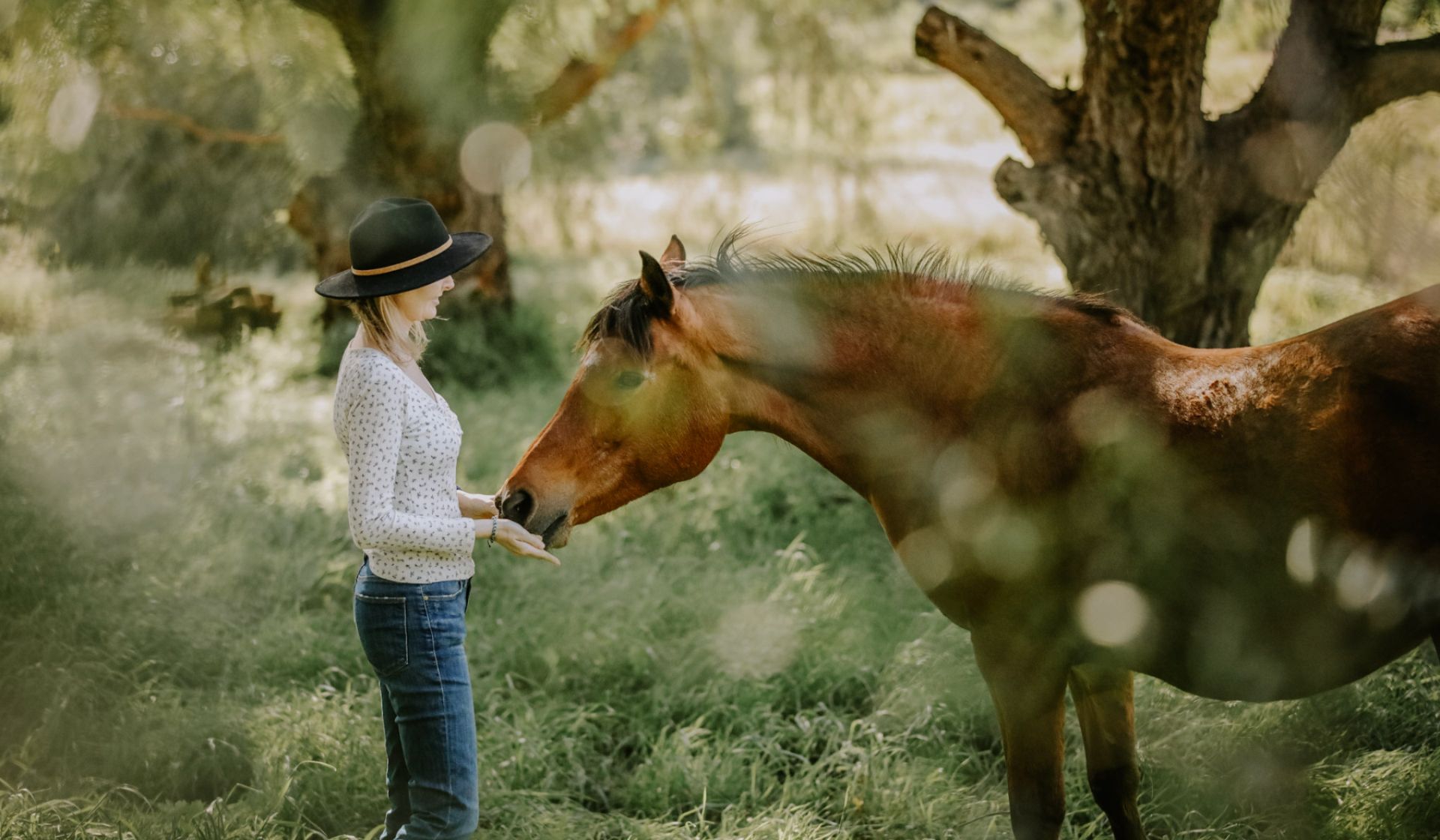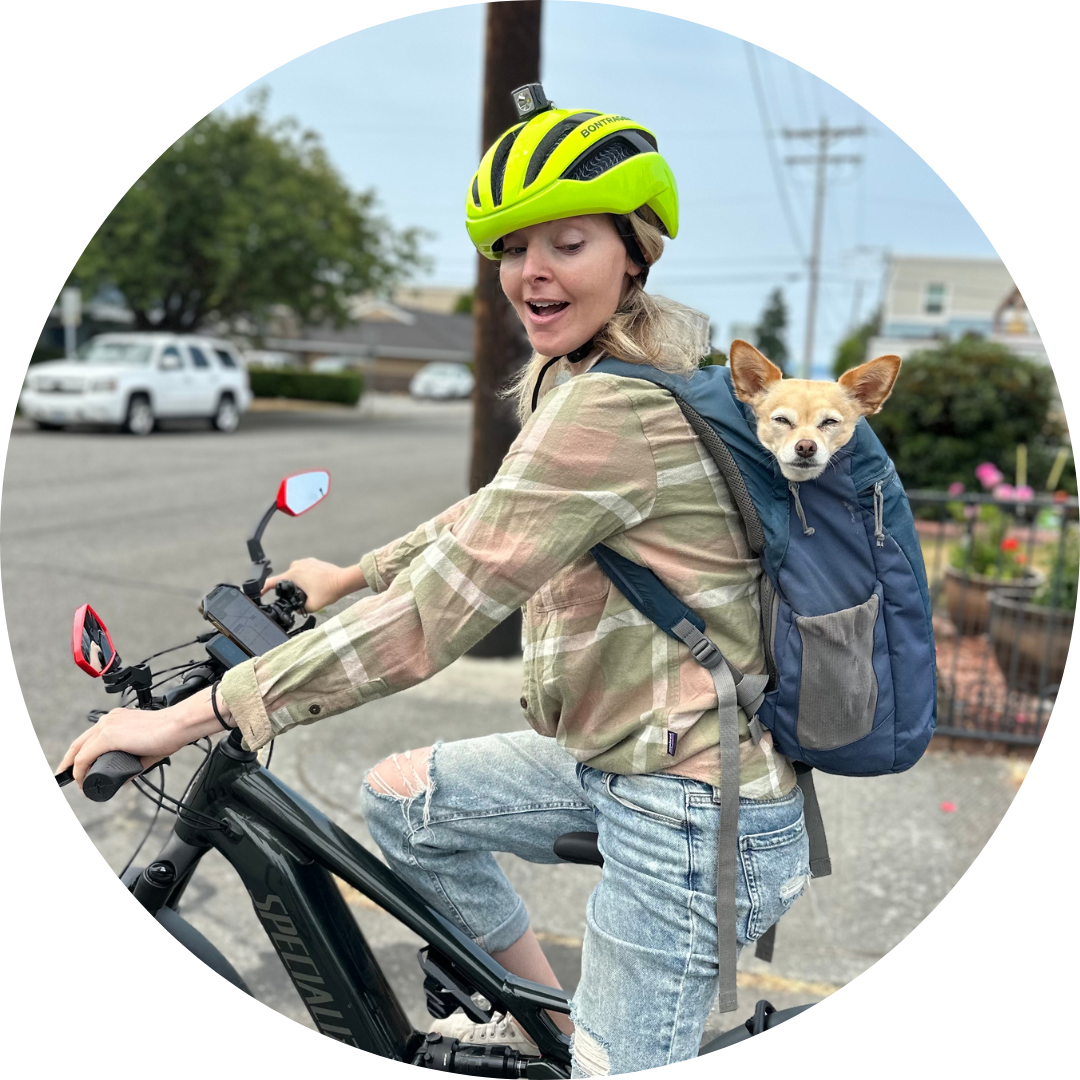Confronting language to shift our cultural relationship with wildlife
By Kristen Weiss
One of the properties I frequently drive past on my way home is a tree nursery, with a tiny corral at its entrance beside a busy road. A few weeks ago, I noticed that a small, young horse had been placed in the corral. In front is a sign that reads, FOR SALE: ANDALUSIAN HORSE. The colt, dappled gray and still slightly gangly, is likely no more than a year old. He paces his tiny, circular pen (perhaps thirty feet in diameter) all alone—with no other horses, people, or animals in sight—all day, every day, from what I can tell.
I wonder what pain and confusion this young animal must feel, to be torn from his mother and thrown on display in a dusty 30-foot prison, the smell of diesel exhaust from the adjacent truck route replacing the tender breath of his mother’s nuzzle, the grating sounds of revving engines and squealing breaks overpowering the nickers and whinnies of his brethren.
A horse’s wellbeing, according to horse care experts, is dependent on three core elements, often called the three F’s: friends, forage, and freedom. Friends refers to the intrinsic need that horses have for social connection—they rely on the security of being part of a herd, and build strong social bonds with other horses. Forage indicates the importance of providing horses with 24-7 access to hay or other grasses. Horses naturally spend much of their time grazing, and depend on frequent foraging to maintain gut health. Freedom means that horses are free to move, and to make choices about how they spend their time, and with whom.
A band of wild horses grazing near the Salt River, Arizona (photo: Kristen Weiss)
Unfortunately, our human rubric for how we consider the welfare of other species—whether horses, dogs, cows, fish, or insects—typically fails to consider the full spectrum of an animal’s emotional needs. Similarly, while animal cruelty is a punishable crime, the definition of “cruelty” is alarmingly narrow. The treatment of the young horse I drive past every day, for example, would not be deemed as abuse as long as he is being fed hay and water each day, and not being physically beaten. The fact that he is a conscious being whose social and emotional needs are woefully neglected does not factor into consideration. Protections for wildlife are often even less stringent—hence why it is completely legal to run down and kill wolves and coyotes with snowmobiles in states like Idaho, Montana, and Wyoming, with complete disregard for intrinsic rights of these animals.
It is no secret that humans are walking contradictions. We are whiplashed with cognitive dissonance, hyper-rationalization, and sometimes willful ignorance, which help us defend our arbitrary moral boundaries even in the face of conflicting evidence or viewpoints. Our colonial-capitalist Western society simultaneously encourages us to spend thousands of dollars to spoil our dogs and cats while turning a blind eye to the mass murder of millions of cows, chickens, pigs, and sheep. Leaving your dog outside in winter could put you in jail; so, too could rescuing a sick, mutilated calf from a factory farm. We kill wild carnivores to protect deer or cattle, so that we can kill those animals ourselves. We name revered sports teams after panthers, wolves, and even coyotes—presumably out of respect for their remarkable prowess and innate survival abilities—while also demanding that these species be eradicated as “problem animals” for those very same characteristics.
The business owners of Dunlap LURES make frequent public posts on social media bragging about their mass killings and using language that objectifies, minimizes, and vilifies wild animals (and does the same with anyone who expresses dissent in the post comments). Their treatment of these animals harkens to our violent settler-colonial past, which relies on the assumption that (white) humans supersede all other beings, and have the right to terrorize said beings for their own amusement or financial gain. (photo: public facebook page of the business Dunlap Lures)
Hidden in plain sight (and words)
The dissonance in our actions is not always due to maleficent intent; much of it stems from an obfuscation of language surrounding violence and death. We’ve been trained to think of hunting as “recreation” and killing as “sport,” rather than a traumatic, terrifying experience for a hunted animal and his or her family members or herd mates. The butchering of millions of animals that end up on our dinner plates are “livestock” that have been “harvested,” rather than caged, tortured, drugged, and abused souls who have strong emotional bonds with their parents and children.
I understand the false sense of security and validation this abstraction provides, but I want to work towards dismantling it through a more conscientious approach to language. I think we owe it to ourselves to engage in deeper conversations about how we can and should interact with wildlife and domestic animals—and with other humans, for that matter.
Dr. Gosia Bryja has written extensively on this topic, including in her blog titled Discarding euphemisms: the fate of animals deserves truthful words. In it, she describes how academia has contributed to dismissing the inherent rights of more-than-humans:
“Years of education — formal or informal — about wildlife management and conservation have shaped our views and beliefs about the natural world. Words like ‘crop’, ‘harvest’, ‘stock’, ‘cull’, ‘yield’, and ‘surplus’ used in biological sciences and by government institutions in reference to wildlife have been so broadly and indiscriminately disseminated that they have achieved a predictable outcome — stripping us of compassion towards non-human animals. Once they are turned into ‘crops’ to be ‘utilized’ and ‘harvested’ for food, all the majestic creatures we had so much affection for and were so fascinated by as children are no longer permitted to feel pain or experience anguish. Words have rendered their suffering irrelevant. In the end, as a result of verbal reframing, it is not what really happens in blood-stained fields and forests that determines our emotional reactions but rather the words we use to make what happens there palatable…These words are blindfolds put over our eyes or drips of alcohol seeping into our bloodstream; they are meant to numb our senses and make us do, justify, and accept what we know is cruel, horrific, and heart-wrenching.”
I studied wildlife ecology as both an undergraduate and graduate student. I eagerly learned all the jargon and soaked up the scientific scripture surrounding natural resource management and biodiversity conservation. I memorized the equation for maximum sustainable yield and solemnly accepted the necessity of “culling” some species to protect others. For years I suppressed the heaviness in my heart and the unsettled feeling in my stomach when animals were discussed as if they were mere data points on a graph, rather than individuals with rich lives and histories.
Coyote parents rest while pups play. (photo: Sheryl Hester)
One of Project Coyote’s previous summer interns, Mack Cote, wrote a blog in which she describes a similar academic experience.
“I think back to the stuffed deer and foxes and coyotes in the classroom,” she recounts. “I think of taxidermy as an attempted space for connection – a place where people can easily access the beauty of beings that they wouldn’t be able to be close to otherwise. But there is no life here, and where there is no life there cannot be connection. I think of the constructs of ‘wildlife management’ as an attempt to connect, as well. But similarly, where there is domination and manipulation, there cannot be connection. There can only be a flattening of experience.”
More recently I have been fortunate enough to learn about the concepts of compassionate conservation and coexistence, approaches to protecting the natural environment that integrate science with ethics in a way that better addresses animal welfare and makes human values more transparent. Still, there is much I appreciate about my academic education, not least of all the variety of experiences I had and people I met that encouraged me to think critically, ask questions, and trust my intuition. During my doctoral research, in particular, I was fortunate to work closely with Indigenous communities who opened my eyes to a more holistic understanding of the natural world that views all beings as kin who we have responsibility to care for.
Throughout my career, working with individuals from such a vast range of expertise and worldviews has opened my eyes to the importance of language to finding common ground. The way we speak to and with each other has huge ramifications for how we build trust, empathy, and shared values. As a communications specialist, I’m intrigued with how the language we use impacts our relationships with each other, wildlife, and nature, and how these relationships inform policies and management approaches.
Kristen during her PhD research working with scientists and Indigenous community leaders to study sea turtles in the Torres Strait Islands, Australia.
For example, species like wolves and coyotes have been historically described using aggressive, violent language that has had lasting impacts on how humans manage and treat these animals in North America. Hunters frame these animals as dangerous predators that threaten human and animal safety, perpetuating a relationship with nature based on domination and speciesism. Wildlife management agencies continue to use words like harvest, cull, or euthanize to reduce an emotional connection to animals they kill, which serves to quell public outcry and legitimize their questionable methods.
One of the most important things we can do to shift the conversation around wild carnivores—and all animals, wild or domestic—is to consider how we use language. At Project Coyote, we take great care in the words we use to describe animals and our relationships with them. We have frequent discussions amongst our team, aided by guidance from experts, research, and introspection.
Last year, our staff spent considerable time developing a shared vocabulary to guide our internal and external communication around wild carnivores. Instead of speaking about species as “natural resources” or “populations to be managed”, for example, we speak of these animals as “wild lives,” “wild neighbors,” or “more-than-human beings.” Our goal is to emphasize the intrinsic value of individual animals and avoid words that have been used historically to villainize or devalue individuals or certain species. Coyotes are not heartless, aggressive predators; rodents are not unworthy vermin; and cows are not mindless prey animals whose value depends on the price of beef. Each of these species is composed of individuals whose unique needs, emotions, and social bonds deserve to be recognized, just as we recognize the individuality of our beloved dogs, cats, and other companion animals.
Gray fox mother and kit sharing a tender moment (photo: Sarah Killingsworth)
Right now, we are witnessing many world leaders — including those in the United States — amplify words and phrases that render entire populations of people as less-than-human in order to justify acts of war, genocide, and oppression. Similarly, the language used by some politicians, hunters, and wildlife managers allows them to justify killing “problem” animals, or to employ mass killing rather than non-lethal methods of management. The US Department of Agriculture’s Wildlife Services program, for example, states that their purpose is to “provide wildlife damage management assistance to protect agriculture, natural resources, property, and health and safety.” In reality, they spend taxpayer dollars to slaughter over one million wild animals every year, including coyotes, grizzly bears, bobcats, raccoons, foxes, and turtles. The program uses killing methods ranging from cyanide bombs and neck snares to aerial gunning and foothold traps. Our government minimizes the lives of these millions of animals by purposely using language that obscures the violence and brutality involved in their deaths so as not to engender public condemnation.
With nearly two decades worth of experience in biodiversity conservation on public and private lands, Dr. Michelle Lute, Executive Director at Wildlife For All and previous Project Coyote staff member, is critical of the North American Model for wildlife conservation. “We have ancient methods with modern updates, like solar-powered fencing and range riders, to prevent conflict before it occurs,” she writes. “But instead of investing in those tools and teaching people how to use them, our governmental agencies tend to manage wild nature as if it were a cash crop that only exists for short-term human interests.”
The voices of ranchers and recreational hunters have long overpowered those of the general public in the wildlife management sphere, and they have fought hard to retain their right to kill wild animals, even in the face of scientific and ethical opposition.
In the case of Montana, running down wild carnivores with snowmobiles is still legal, even after Cody Robert’s graphic display of animal cruelty went viral last year and drew broad scrutiny to the practice. Why? Because ranchers successfully crafted rhetoric arguing that predator “whacking” is a crucial “tool” for protecting “livestock” from coyotes and wolves.
According to an article in the Buffalo Bulletin, “Legislators considered an amendment that would have made it illegal for anyone to injure or disable a predator by any means without immediately killing it. But the state livestock lobby opposed the amendment, worrying about other forms of predator control — like shooting them from aircraft, trapping or using toxic chemicals.”
The article quotes Jim Magagna, executive vice president of the Wyoming Stockgrowers Association, who stated, “It would be a real mistake to try and broaden this to cover all of those different types of tools. We’re seeing attacks on the tools that we’ve used. We’ve lost several of those as a result of federal actions, and we simply cannot afford, as an industry, to lose more.”
By re-framing violent killing methods as “tools,” hunters have effectively strong-armed legislators into legalizing completely unethical, gruesome practices as critical elements in protecting rancher livelihoods. This argument both ignores data showing that wild carnivore predation results in a much smaller proportion of livestock losses than all other causes (including disease and weather), and underscores the disregard of many ranchers and farmers for effective non-lethal predation control methods.
It’s time to adopt a language of truth
Words can excuse horrible actions; they can deceive; they can incite fear, hatred, or apathy. But words can also evoke compassion and empathy, and build bridges between worldviews through shared understanding. It’s my belief that we can contribute to an emotional and behavioral shift among humans by replacing euphemistic language with words that better represent the true nature of our relationships with animals and ecosystems. Hopefully this shift will lead to more ethical and compassionate interactions with wildlife and wild places. I appreciate that Project Coyote’s work incorporates not only the best available science, but also a deep concern for the ethics and values involved in wildlife policy, and this is reflected in the words we use to build an emotional connection between humans and wild carnivores.
A raccoon mother watches over her young kit. (Photo: Kristen Weiss)
As Dr. Bryja writes, “Only when we start using a different language — the language that is truthful to the reality it depicts — will we be able to awaken ourselves from a slumber of our indifference and take responsibility for how we relate to nature … Adopting the language that is truthful to the reality it depicts will help crumble the wall that detaches us from animals and numbs us to their suffering. It could also lead us to reconsidering the very premises upon which our wildlife ‘management’ is based and practiced. We owe such reconsideration both to our own humanity and to fellow creatures we share this planet with.”
How do we cultivate truth through language? One way is through storytelling. Project Coyote Ambassador Vanessa Chakour, an accomplished writer and rewilding expert, describes storytelling as a powerful way to ignite change.
“Stories create neural pathways; they become us,” says Chakour. She uses the written word as one approach to cultivating coexistence between humans and wildlife. “As an author and nature advocate,” she writes, “I’m constantly grappling with these questions: how can I use writing to evoke a deep empathy for our wild kin, and will that empathy translate into compassion, action, and lasting change?”
Stories that put animal sentience front and center, that lay bare the suffering caused by human hands, or that celebrate our interdependence with animals and nature, all have a place in opening our minds to more ethical and compassionate wildlife management.
Another way to encourage empathy through language is to consciously address the violent undercurrents of the words we use. So many of our everyday phrases include references to weapons, war, and injuring or killing people and animals (“like shooting fish in a barrel,” “killing two birds with one stone,” “pull the trigger,” “dodge a bullet,” and “beating a dead horse”). Choosing to replace words rooted in violence with those that evoke compassion and harmony is a radical act in support of peaceful discourse.
Words are potent modes of expression; as a species reliant on language to build social frameworks, the language we construct to relate to each other also heavily influences how we perceive the world around us. Words are like bricks helping us construct our version of reality—they can serve to fortify our beliefs and wall us off from other viewpoints, or they can line pathways of connection that lead to new depths of understanding. We can redirect the flow of language, and therefore action, through a conscious effort to build dialogue around words that better reflect our aspirations toward ethical and humane behavior.
Kristen with Psyierra, a rescued Arabian mare she helps care for. (photo: Caine Meyer)
Wild animals have captured the human imagination for as long as we’ve existed. They are the villains and heroes in our myths and stories; they are our teachers, our sustenance, our companions; and they often bear the brunt of our shortcomings. While humans are just one of many animals on this planet, what makes us somewhat unique—besides our complex written and spoken language—is our ability to reflect on the morality of our actions and make conscious choices about how we characterize and treat the sentient beings we share this planet with.
One word at a time, animal advocates the world over are re-writing our relationship to nature and wildlife. Together, we can tell a story of compassion and justice. A story where animals are our kin; where horses run free in herds and coyotes never have to fear the hum of a snowmobile. Will you co-author this story with me?
Kristen Weiss is the Public Engagement Coordinator for Project Coyote, working to enhance Project Coyote’s relationships with the public, volunteers, and community. With a background in ecological management and science communication, Kristen believes strongly in the combined powers of good science and engaging storytelling to catalyze conservation and sustainability efforts.

